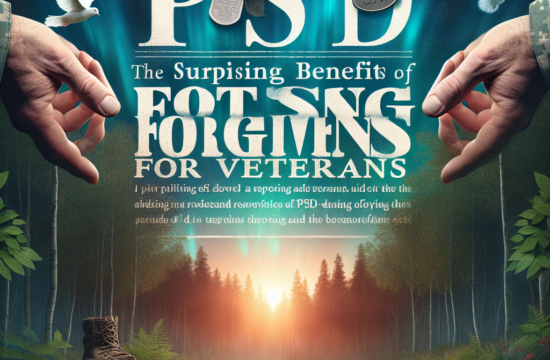==> Thank you for reading this post! Click Here If you are looking for support and Victory over PTSD.
Understanding PTSD and Its Impact
Defining PTSD in Contemporary Terms
Hey there! Let’s kick things off by talking about what PTSD actually is. Post-Traumatic Stress Disorder, or PTSD, is something that many folks grapple with after experiencing or witnessing traumatic events. In my journey, I’ve come across people from all walks of life – veterans, assault survivors, and more – all struggling to make sense of their experiences. It’s more than just feeling sad; it’s a debilitating condition that can manifest in anxiety, flashbacks, and even emotional numbness.
Understanding PTSD means acknowledging the wide array of symptoms and how differently they can show up for each person. Some might struggle with intrusive thoughts, while others might avoid situations that remind them of their trauma. Personally, it felt like I was in a fog, unable to see clearly due to the weight of my experiences. Understanding this helped me connect the dots and realize the importance of seeking help.
PTSD doesn’t have a one-size-fits-all solution. Each story is unique, and recognizing that is essential to healing. So, the first step in exploring treatments like EMDR and Biblical healing is to truly understand the nature of the beast we’re dealing with!
Exploring EMDR Therapy
How EMDR Works
Okay, so let’s dive into EMDR, which stands for Eye Movement Desensitization and Reprocessing. This therapeutic approach was a game-changer for me. Simply put, it’s a way to help your brain process traumatic memories more effectively. Imagine your brain is like a computer that has a ton of files on it, and some of those files are corrupted due to trauma. EMDR helps in repairing those files, if you will.
The therapy involves bilateral stimulation, often through guided eye movements, while the patient recalls a traumatic event. This can allow the brain to reprocess the trauma while creating new, less distressing associations with it. For me, each session felt like peeling off layers of an onion. It was a bit painful at times, but I slowly began to feel lighter.
One of the coolest things about EMDR is that it doesn’t require patients to go into graphic detail about their trauma repeatedly. This was a major appeal for me, as reliving events that had caused me pain was the last thing I wanted to do. Instead, we focus on the feelings and beliefs associated with the trauma, making the journey slightly less excruciating.
The Biblical Approach to Healing
Faith-Based Healing Practices
On the flip side, let’s talk about Biblical healing. For many, turning to scripture and faith provides comfort and strength during tough times. In my own path, I found peace in passages that promised God’s presence in pain. It felt like a warm hug, reminding me I wasn’t alone in my struggles.
Faith-based healing can include prayer, meditation on Scripture, and community support within a church or group. There’s something deeply nourishing about fellowshipping with others who share similar struggles and beliefs. For me, prayer was especially powerful; it was my way of letting go of my burdens and asking for strength to keep moving forward.
The Biblical perspective emphasizes hope, forgiveness, and love. It’s about trusting in God’s plan, even when the path seems rocky. This approach has brought me moments of clarity and serenity that I had never experienced before. I believe that nurturing one’s spirit can be as crucial as seeking physical or mental healing.
Comparative Effectiveness
Results from EMDR versus Biblical Healing
When weighing EMDR against Biblical healing, it’s clear that many will experience different results. I’ve seen friends profoundly impacted by EMDR’s techniques, feeling empowered to tackle their trauma directly. For others, however, the solace found in scripture and the community is what brings healing.
One interesting aspect is that some find a way to integrate both approaches. They use EMDR therapy as a practical tool while drawing on their faith for emotional support. Personally, finding that balance was key. I would go through my EMDR sessions, but I’d also spend time praying and reflecting on verses that resonated with my struggles.
Effectiveness really boils down to what resonates most with the individual. I believe both paths highlight the importance of personal choice in healing; there’s no right or wrong when it comes to finding what works best for you. It might even involve a combination of both practices, which I found quite enriching!
Get Support and Help with Recovery! Visit us for more Information and Support
Personal Testimonials and Experiences
Real-Life Stories of Healing
Looking back, I gathered so many nuggets of wisdom from people who have walked similar roads. One friend shared how EMDR transformed her life. After years of feeling trapped by her memories, she stepped into therapy and discovered a new freedom she never thought was possible. It’s stories like these that light a fire of hope.
Conversely, several individuals I know have found their healing through their faith, often sharing testimonies that echoed similar sentiments of peace and restoration. One of them recalled how leaning into prayer shifted their perspective entirely, helping them let go of the burden they had been carrying for years.
Both types of healing highlight the power of story. Whether through therapy or scripture, these narratives connect us, reminding us that we’re not alone. The beauty lies in how we each find our unique paths to healing, inspiring one another along the way.
Conclusion: Choosing Your Path to Healing
The Importance of Personal Choice
Zooming out, the journey to healing from PTSD is deeply personal. When navigating options like EMDR and Biblical healing, it’s crucial to listen to your gut. I can’t stress enough how vital it is to find the path that resonates with you. There’s a world of resources, each with its unique benefits and nuances.
Ultimately, it’s about arming yourself with knowledge and being open to exploring various avenues. Don’t be afraid to try things out! I found it helpful to talk with professionals, friends, and spiritual mentors along the way. Their insights often provided clarity in moments of confusion.
In the end, whether you lean toward EMDR, seek healing through scripture, or find a mix that works for you, the most significant takeaway is that healing is possible. The important part is recognizing the value in your own journey.
FAQ
What is the primary difference between EMDR and Biblical healing?
The primary difference lies in their approaches: EMDR is a psychological therapy focused on processing trauma through specific techniques, while Biblical healing emphasizes spiritual growth and reliance on faith for healing.
Can I use both EMDR and Biblical approaches together?
Absolutely! Many people find that integrating both can provide a balanced approach to healing, utilizing the practical tools of EMDR alongside the emotional support from faith-based practices.
Is EMDR suitable for everyone with PTSD?
While EMDR can be highly effective, not everyone may respond well to it. Each person’s experience is unique, so it’s essential to evaluate options based on individual circumstances and preferences.
How can I determine which healing approach is right for me?
Listening to your instincts is vital. Consider exploring both options through research, discussions with professionals, or trial sessions to see what resonates most with you personally.
What resources are available for someone considering these healing paths?
Numerous resources exist, including licensed therapists specializing in EMDR, community support groups, and faith-based organizations. It might be helpful to reach out to local resources or online communities for support.













